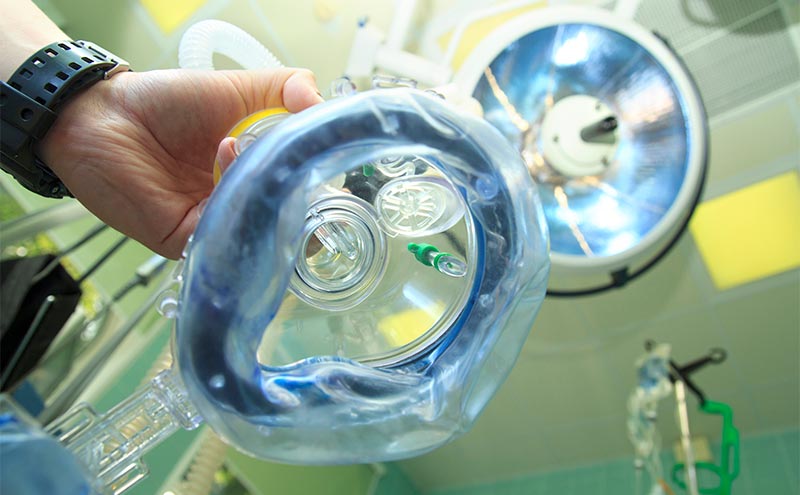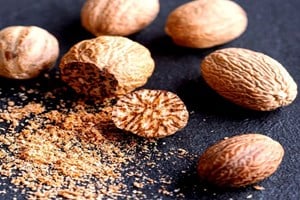
Nitrous Oxide Misuse and Abuse
Nitrous Oxide Use and Toxicity
Often used as an anesthetic in the clinical setting, nitrous oxide (N2O) is also among the more commonly abused inhalants, a group of xenobiotics that typically refers to a range of substances including hydrocarbons and alkyl nitrites. In the United States, inhalant abuse is most common among adolescents aged 12 to 17, and prevalence continues to increase. In 2019, 3.0% of adolescents and 1.7% of adults aged 18 to 25 reported using inhalants within the past year1. While the majority of these inhalants can be found in products such as glues and adhesives, gasolines and fuels, dusters, sprays, and deodorizers2, nitrous oxide is often found in canisters used for whipped cream dispensers, from which the term whippits is derived (Figure 1). This practice of inhaling from these canisters is likely popular due its euphoric effects, low cost, and ease of access3.
Figure 1 – “Whip-it” nitrous oxide canister
Nitrous oxide has been in use as an anesthetic for nearly 200 years4. Unlike most inhaled anesthetics, nitrous oxide is an NMDA receptor antagonist rather than a GABA agonist5, and its analgesic effects are likely related to its activity on κ-opioid receptors6. While morbidity or mortality related to acute toxicity are uncommon and usually related to accidental asphyxiation or trauma2, chronic use has been found to result in significant neurologic toxicity, and more recently has been found to cause coagulopathy as well. Neurologic toxicity is rooted in the interaction between nitrous oxide and cobalamins, which has been known since at least 19767. Nitrous oxide irreversibly oxides the cobalt ion of cobalamin, rendering cobalamin unusable in its typical role as a co-enzyme8. Vitamin B12 is a necessary co-factor for the formation of methionine from homocysteine, thus the non-functional vitamin B12 from nitrous oxide toxicity leads to impaired DNA synthesis and myelin production, as well as accumulation of homocysteine. This functional vitamin B12 deficiency can then cause demyelination of the spinal cord’s dorsal column, resulting in paresthesias and ataxia, followed by extremity weakness. Physical exam will typically reveal flaccid weakness more prominent in the lower extremities, and MRI often demonstrates findings typical of posterior column degeneration9. In the majority of cases, vitamin B12 levels are found to be low or low-normal10.
More recently, chronic nitrous oxide abuse has been identified as a likely culprit of acute venous thromboembolism (VTE), likely as a result of homocysteine accumulation due to functional vitamin B12 deficiency. Hyperhomocysteinemia has been observed to cause increased risk of VTE11, and multiple cases of VTE in the setting of elevated homocysteine levels after chronic or prolonged nitrous oxide abuse have now been reported3,12–14. Chronically elevated homocysteine levels have also been found to promote coronary artery disease via enhanced platelet activation and endothelial dysfunction15,16. There is at least one reported instance of an ST-elevation myocardial infarction in a 28-year old with a history of chronic nitrous oxide abuse;15 however, a randomized trial in perioperative patients did not demonstrate increased risk of cardiac events with nitrous oxide administration.17
Management
The most important intervention for patients with nitrous oxide toxicity is abstinence. While the neurologic effects of some inhalants are irreversible, neurologic deficits associated with nitrous oxide abuse may recover over time18. Unique features of the management of nitrous oxide toxicity include supplementation of vitamin B12, via either intramuscular injection or oral routes. Vitamin B12 supplementation is a common choice in most case reports, given the vitamin’s low risk profile and high prevalence of vitamin B12 deficiency, thus it is considered a reasonable therapeutic option2. Many patients do have improvement in their neurologic symptoms, and in one case of nitrous oxide abuse presenting with delusions and bizarre behavior, vitamin B12 supplementation led to resolution of psychosis19.
Conclusion
Nitrous oxide is an increasingly popular inhalant of abuse, and is easily accessible by online purchase, typically in gas canisters marketed for use in whipped cream dispensers. Nitrous oxide exhibits euphoric properties via NMDA receptor antagonism, similar to that of ketamine or phencyclidine (PCP). Acute toxicity is rare, while chronic nitrous oxide abuse has been shown to cause functional vitamin B12 deficiency resulting in multiple neurologic deficits on exam and by neuroimaging. As such, nitrous oxide abuse should be considered particularly in young patients presenting with ataxia, paresthesia, or weakness of the lower extremities. More recently, nitrous oxide abuse has also been found to increase homocysteine levels resulting in venous thromboembolism. Many patients will have improvement in symptoms with abstinence from use, and vitamin B12 supplementation is considered a reasonable therapeutic intervention upon presentation.
References:
- SAMSHA. Key substance use and mental health indicators in the United States: Results from the 2018 National Survey on Drug Use and Health. HHS Publ No PEP19-5068, NSDUH Ser H-54. 2019;170:51-58. https://www.samhsa.gov/data/.
- Long H. Inhalants. In: Goldfrank’s Toxicologic Emergencies. Eleventh. Mcgraw-Hill Education; 2019:1193-1202.
- Pratt DN, Patterson KC, Quin K. Venous thrombosis after nitrous oxide abuse, a case report. J Thromb Thrombolysis. 2020;49(3):501-503. doi:10.1007/s11239-019-02010-9
- GUTTORMSEN AB, REFSUM H, UELAND PM. The interaction between nitrous oxide and cobalamin. Acta Anaesthesiol Scand. 1994;38(8):753-756. doi:10.1111/j.1399-6576.1994.tb03996.x
- Jevtovic-Todorovic V, Wozniak DF, Benshoff ND, Olney JW. A comparative evaluation of the neurotoxic properties of ketamine and nitrous oxide. Brain Res. 2001;895(1-2):264-267. doi:10.1016/S0006-8993(01)02079-0
- Koyama T, Fukuda K. Involvement of the κ-opioid receptor in nitrous oxide-induced analgesia in mice. J Anesth. 2010;24(2):297-299. doi:10.1007/s00540-010-0886-5
- Blackburn R, Kyaw M, Swallow AJ. Reaction of Cob(1)alamin. J Chem Soc. 1976;(1):250-255.
- Pema PJ, Horak HA, Wyatt RH. Myelopathy caused by nitrous oxide toxicity. Am J Neuroradiol. 1998;19(5):894-896.
- Lan SY, Kuo CY, Chou CC, et al. Recreational nitrous oxide abuse related subacute combined degeneration of the spinal cord in adolescents – A case series and literature review. Brain Dev. 2019;41(5):428-435. doi:10.1016/j.braindev.2018.12.003
- Garakani A, Jaffe RJ, Savla D, et al. Neurologic, psychiatric, and other medical manifestations of nitrous oxide abuse: A systematic review of the case literature. Am J Addict. 2016;25(5):358-369. doi:10.1111/ajad.12372
- Ray JG, Kearon C, Yi Q, Sheridan P, Lonn E. Annals of Internal Medicine Article Homocysteine-Lowering Therapy and Risk for Venous. Ann Intern Med. 2007:761-767.
- Faguer S, Ruiz J, Mari A. Massive hyperhomocysteinaemia as a complication of nitrous oxide inhalation. Br J Clin Pharmacol. 2016;81(2):391-392. doi:10.1111/bcp.12813
- Molina MF, Al Saud AA, Al Mulhim AA, Liteplo AS, Shokoohi H. Nitrous oxide inhalant abuse and massive pulmonary embolism in COVID-19. Am J Emerg Med. 2020;38(7):1549.e1-1549.e2. doi:10.1016/j.ajem.2020.05.023
- Kang SW, Hong JM, Namgung DW, Choi YC. Neurological manifestations of myeloneuropathy in patients with nitrous oxide intoxication. J Clin Neurol. 2019;15(1):116-117. doi:10.3988/jcn.2019.15.1.116
- Indraratna P, Alexopoulos C, Celermajer D, Alford K. Acute ST-Elevation Myocardial Infarction, a Unique Complication of Recreational Nitrous Oxide Use. Hear Lung Circ. 2017;26(8):e41-e43. doi:10.1016/j.hlc.2017.01.019
- Myles PS, Chan MTV, Kaye DM, et al. Effect of nitrous oxide anesthesia on plasma homocysteine and endothelial function. Anesthesiology. 2008;109(4):657-663. doi:10.1097/ALN.0b013e31818629db
- Myles PS, Leslie K, Chan MTV, et al. The safety of addition of nitrous oxide to general anaesthesia in at-risk patients having major non-cardiac surgery (ENIGMA-II): A randomised, single-blind trial. Lancet. 2014;384(9952):1446-1454. doi:10.1016/S0140-6736(14)60893-X
- Miller MA, Martinez V, McCarthy R, Patel MM. Nitrous oxide “whippit” abuse presenting as clinical B12 deficiency and ataxia [2]. Am J Emerg Med. 2004;22(2):124. doi:10.1016/j.ajem.2003.12.015
- Sethi NK, Mullin P, Torgovnick J, Capasso G. Nitrous oxide “whippit” abuse presenting with cobalamin responsive psychosis. J Med Toxicol. 2006;2(2):71-74. doi:10.1007/BF03161175
David H. Schaffer, MD and Charlotte Goldfine, MD
Department of Emergency Medicine
Brigham & Women’s Hospital, Boston, MA




